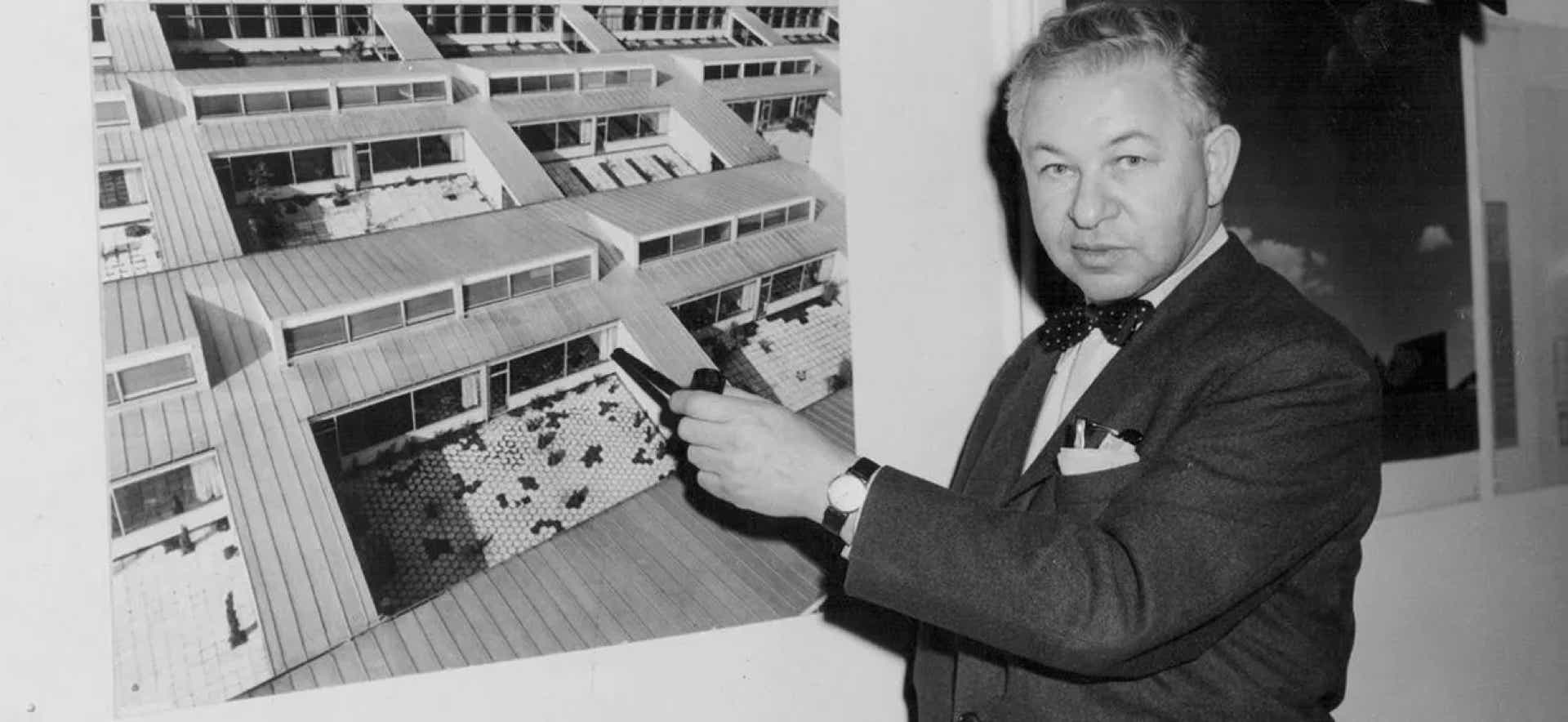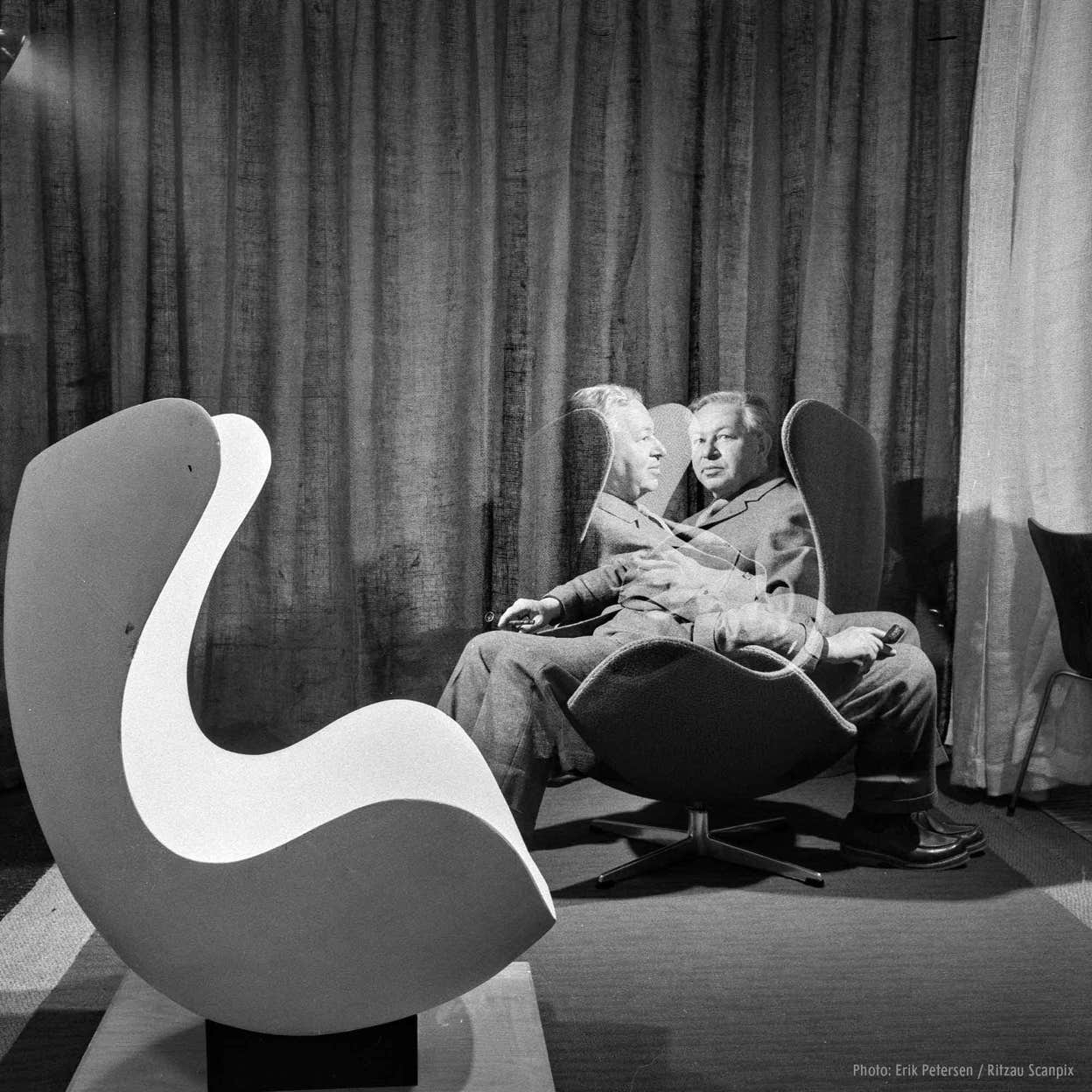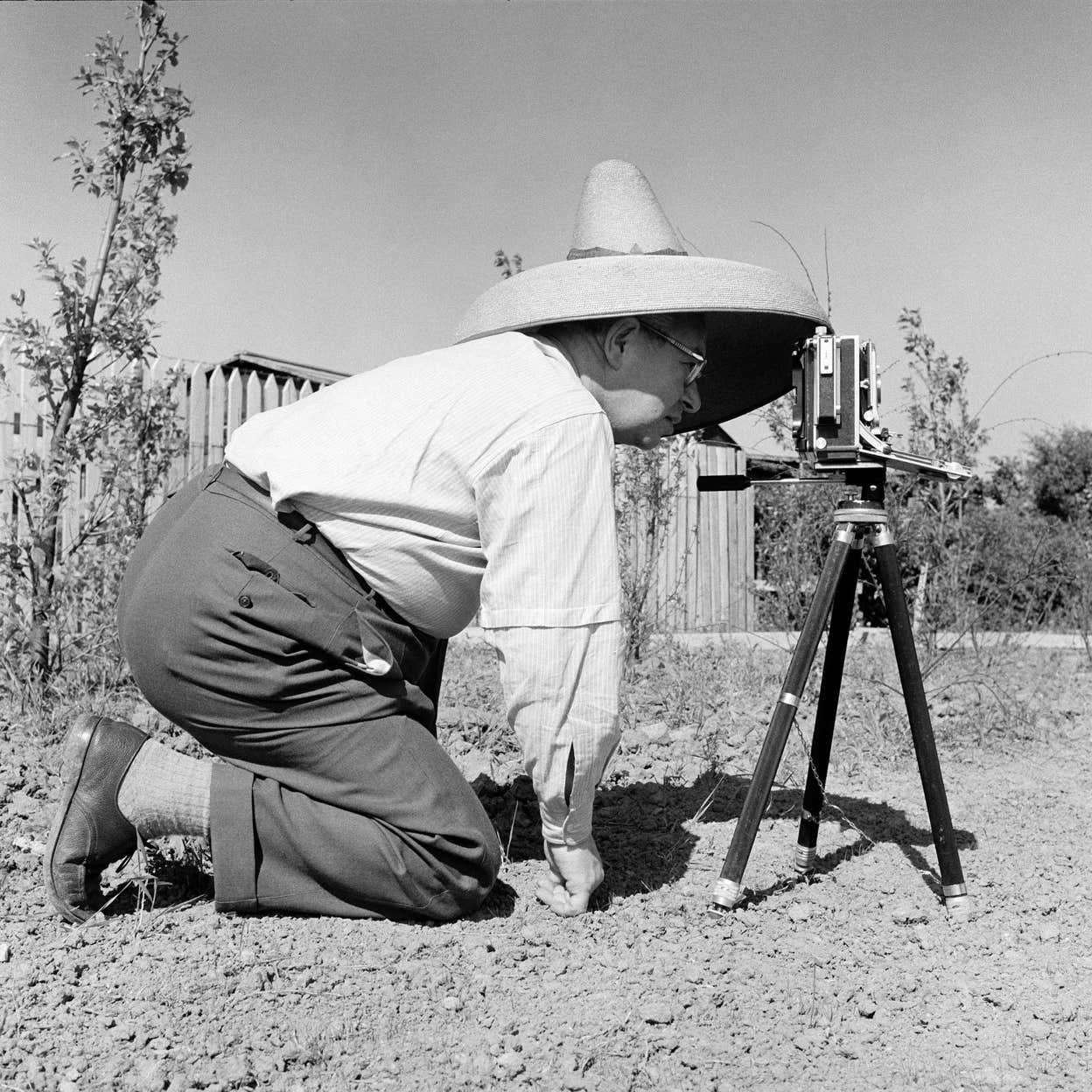Denmark's Arne Jacobsen is arguably the most influential figure in Scandinavian design, alongside Finland's Alvar Aalto. He was an architect and designer as prolific as he was versatile, capable of bringing his full attention to the design of a bank as well as a fork, an armchair as well as a clock.
Jacobsen was born in Copenhagen to a father who sold safety pins and a mother who was a bank clerk and amateur painter. Coming from a family of Portuguese-Jewish descent, his parents were relatively elderly, which is probably why they sent young Arne to boarding school, where he befriended future architect and business partner Flemming Lassen.
Arne Jacobsen soon showed a strong visual talent and a taste for the early modernists, such as Mies van der Rohe and Le Corbusier. Gifted at depicting nature, he wanted to become a painter, but his father convinced him that architecture was a more sensible choice.
Like many Scandinavian designers of the time, Arne Jacobsen acquired both technical and artistic training, first studying at the Copenhagen School of Applied Arts before attending the Royal School of Architecture, from which he graduated in 1927.
In 1929, Arne Jacobsen and his friend Flemming Lassen presented their revolutionary "House of the Future", a circular construction adapted to the car, with a helipad on the roof and a vacuum system integrated into the structure, which automatically removed dust from shoes.
His first major architectural commission was for a seaside resort called Bellevue: he designed not only the Bellavista apartments and the Bellevue theater, but also the interiors, furniture, lifeguard seats, ice packs and entrance tickets.

His highly functionalist approach, inspired by Le Corbusier, led to some rejection by the public, prompting Arne Jacobsen to adopt a more humanist approach, particularly in the treatment of interiors, where he began to use wooden panels and rounder shapes, as in Arhus Town Hall (1942), an ambitious project that established him definitively in the Danish architectural landscape.
As a Jew, he fled Denmark during the Second World War with his second wife Jonna, but also with Poul Henningsen and his wife: together, they took a boat to Sweden. During his exile, he devoted himself to textile design, in collaboration with Jonna, and designed a number of motifs that are now used in fabrics and wallpapers.

Back home, Arne Jacobsen completed a series of landmark projects, including the country's first modern school, in Munkegaard, in 1957, for which he designed the 3300 series of armchairs and sofas, still in production at Fritz Hansen.
Arne Jacobsen never designed furniture outside the requirements of a specific project. His famous Ant Chair, a huge success in the 50's and 60's (and again today), was designed for the Novo canteen in 1952. The Série 7 chair, his most famous chair and one of the world's best-selling pieces of furniture, was designed for Rødovre Town Hall. His famous AJ lamp (published by Louis Poulsen), as well as his iconic Egg and Swan armchairs (published by Fritz Hansen), were designed for Copenhagen's legendary SAS Hotel (1960).

Arne Jacobsen's last great architectural work is also his only building outside Denmark: St Catherine's College, Oxford (1964), a modernist interpretation of the traditional Oxbridge college with its enclosed rectangular form. It was chosen because Lord Bullock had spotted the quality of his Munkegaard school, where buildings and furnishings were particularly well suited to student work. It was here that Arne Jacobsen designed his Oxford desk chair, still published by Fritz Hansen, and the Oxford lamp, recently reissued by Louis Poulsen.
Arne Jacobsen died in 1971, leaving an immense legacy that continues to influence designers and architects. A demanding perfectionist, he was not always an easy man to work with, as he expected the same commitment to detail and perfection from everyone he worked with. But he was also a jovial, funny and sometimes disconcerting man.
« You need an original to make an original »
Arne Jacobsen